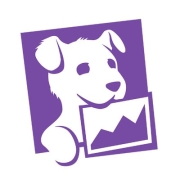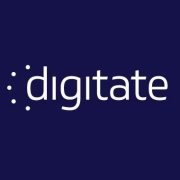AIOps leverages AI and machine learning to enhance IT operations, providing intelligent insights and improving decision-making. It streamlines processes by automating routine tasks and identifying patterns for efficient management.
AIOps facilitates proactive IT management by analyzing vast amounts of operational data in real-time. This approach helps in anticipating potential issues, reducing downtime, and optimizing overall performance. Advanced analytics enable quick identification and resolution of anomalies, enhancing operational efficiency and reliability.
What are the critical features to look for in AIOps solutions?AIOps implementations in industries like finance and healthcare have showcased improved operational efficiencies, with predictive analytics preventing critical failures. These sectors benefit from enhanced data security and compliance through AIOps-driven automation and monitoring processes.
Organizations gain immense value from AIOps by optimizing IT operations, aligning IT infrastructure with business goals, and enabling innovation through automated solutions that reduce manual intervention.















































In order for AIOps to be most effective, it should not exist in a vacuum. This process should be employed separately, but at the same time in conjunction with an organization’s already existing architecture. The AIOps solutions should be set up so that they can process all of the business’s IT data without being just another cog in the IT infrastructure. They should be an independent platform that is integrated with the existing system. This enables organizations to leverage all of their artificial intelligence capabilities to the fullest.
An organization looking to maximize the benefits that they gain through the implementation of an AIOps solution will want to diversify the needs that it serves. Instead of focusing on one or two highly specific areas of need, users will want to target many different functions. When organizations do this, they are able to address many more of the potential issues that can confront modern IT departments than if they were to limit the scope of their AIOps reach.
DevOps are the set of practices that integrate software development and IT practice teams and tools. AIOps are tools that might be utilized by organizations that deploy DevOps practices.
AIOps solutions are solutions that combine various types of AI technologies to enhance and improve the way that organizations run their IT operations.
AIOps increases efficiency in IT operations by automating repetitive tasks and analyzing vast amounts of data to detect and resolve issues rapidly. It reduces downtime by identifying potential risks and anomalies using machine learning algorithms. This proactive approach enables quicker root cause analysis and enhances overall system performance. AIOps also facilitates seamless collaboration across teams with real-time insights and shared data. By leveraging predictive analytics, it aids in capacity planning and resource optimization. Its ability to correlate data from various sources enhances observability, improving decision-making processes and increasing operational agility.
AIOps solutions enhance incident management by automating the detection and resolution of IT incidents. With advanced machine learning algorithms, AIOps tools can analyze vast amounts of data to identify patterns indicative of potential issues before they escalate. By automating routine tasks and alerting IT teams to critical conditions, response times are reduced, leading to decreased downtime and improved service reliability.
What are the key benefits of implementing AIOps in your organization?Implementing AIOps in your organization offers numerous benefits, including enhanced operational efficiency through automated processes, improved decision-making capabilities with data-driven insights, and reduced operational costs due to lowered manual intervention. The ability of AIOps to predict and prevent potential problems further contributes to a stable and reliable IT environment, enhancing overall business performance.
How does AIOps facilitate better data analysis?AIOps facilitates better data analysis by harnessing the power of artificial intelligence and machine learning to sift through complex datasets quickly. It provides comprehensive insights by correlating and contextualizing data from diverse sources, allowing you to understand trends, detect anomalies, and make informed predictions. This capability results in more accurate and actionable insights that drive business success.
What challenges can businesses face when integrating AIOps?Integrating AIOps poses challenges such as system complexity due to integrating various data sources and aligning existing processes with AIOps capabilities. There's also the need to manage the initial setup and configuration to ensure accurate data analysis. Additionally, training IT staff to effectively leverage AIOps solutions is crucial to maximize their benefits and minimize the learning curve.
How does AIOps support proactive IT operations?AIOps supports proactive IT operations by leveraging predictive analytics to foresee potential disruptions before they impact business operations. By continuously monitoring system performance and employing automated responses for known issues, AIOps ensures smoother operations and reduces the risk of unexpected outages. This proactive approach minimizes downtime and enhances the overall customer experience.